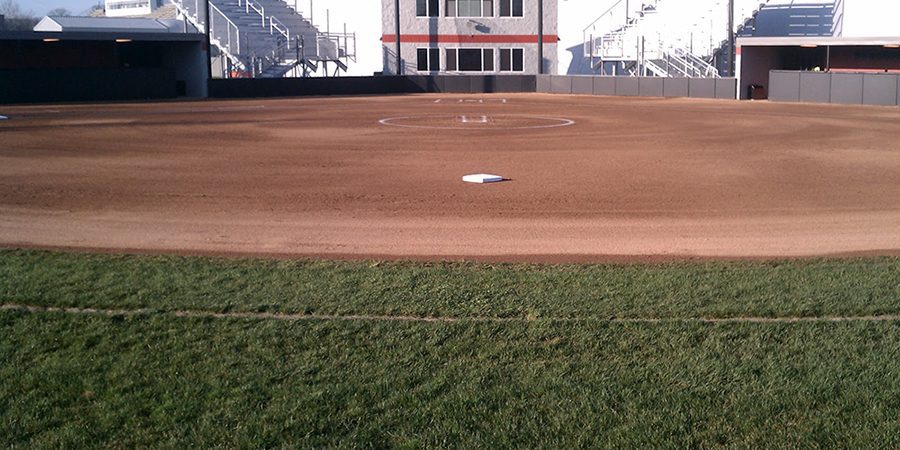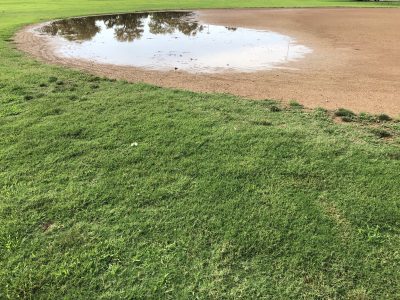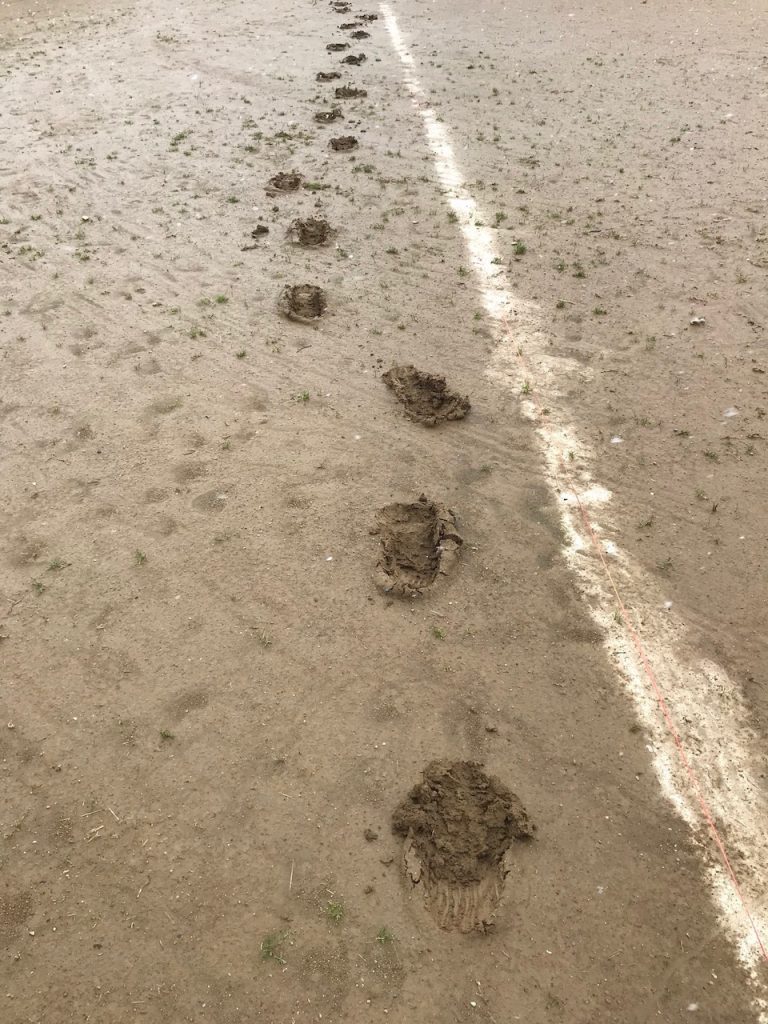The Advantages of Proper Infield Drainage

It’s a known fact that poor surface drainage puts the sports field as well as the players at a disadvantage. Heavy rain that gets trapped in low spots on the infield leads to game delays and cancellations, safety concerns for the athletes, and a field left uneven, rutted, and eroded. To achieve proper infield drainage, it’s really about maintaining the quality of three key factors: the infield mix, the grade of the infield, and the conditioner.
Why is infield drainage so important?
A field with poor surface drainage leads to safety concerns that the flooded, muddy, or uneven ground will cause hazards with footing problems. There will also be a longer turnaround time after a rain event.
Specifically:
- Infield mixes without the proper silt-to-clay ratio (SCR) can cause players to have poor traction, inhale kicked-up infield mix, and possibly slip.
- Flooded or wet infields can result in slipping, sliding, and ankle sprains.
- Eroded or uneven infields can cause players to trip and sprain ankles.
- Ultimately, any bad fall or slip can lead to concussions or other serious head injuries.

What affects proper drainage in the infield?
Engineered Soil
The first factor that affects field drainage is the use of engineered soil. Since most baseball fields are initially built on native soil, it is important to consider what qualities make soil ideal to play on. Using engineered soil for the infield ensures that the material is the best quality and durable enough to handle heavy traffic and play.

Silt-to-Clay Ratio
A part of understanding if the infield soil is right is knowing the silt-to-clay ratio (SCR) of the soil. An ideal SCR should be between 0.5 and 1.0. When the SCR is above 1.0, the infield contains too much silt. This makes the soil sloppy, and it will not absorb rain as quickly as an infield with an SCR between 0.5 and 1.0. If the SCR is below 0.5, the infield contains too much clay, meaning it will not be able to absorb enough moisture and will be too dry.
Infield Grade
Next, it is essential to maintain an infield grade below 1%. Anything over 1% can cause the topdressing on the infield to run off into the outfield during heavy rain and cause erosion.
What are the most common field drainage issues in sports fields?
Our athletic field specialists have seen a few common field drainage errors. Here is a list of these errors and how to remedy the situation:
- Trenching the infield or outfield to achieve quicker drainage is not a permanent solution. Trenching solely works as a temporary fix. It often ends in higher costs to repair the damage done by the trenching than it would have been to correct the drainage problem the first time.
- Drain tiles should not be installed under the infield mix. Instead, the infield mix should be engineered and maintained to promote surface drainage and timely turnaround after it rains.
- Catch basins should not be installed in the infield. The infield mix and conditioner are loose materials that can get into the catch basins and inhibit drainage. Catch basins are better suited for areas of the field that do not see heavy traffic or play and where loose material won’t run off into the drain and clog it.
- Drains should not be backfilled with soil or sand. This prevents proper drainage and can create areas of standing water on the field.
- Excessive drainage does not need to be installed in the infield. Surface drainage can easily be achieved when an infield has the correct infield mix and the proper grade below 1%.
- It’s best to use quality infield mix, conditioner, and other materials. This will ensure the best infield skin for players and will lead to lower costs in maintenance and repairs over time.
Now that you understand the ins and outs of how the infield mix, grade, and conditioner factor into creating a safe and durable infield, you can continue to improve your field through regular maintenance and monitoring.
Not sure which materials to use, or need a field evaluation? Make sure to contact your athletic field specialist for help.







